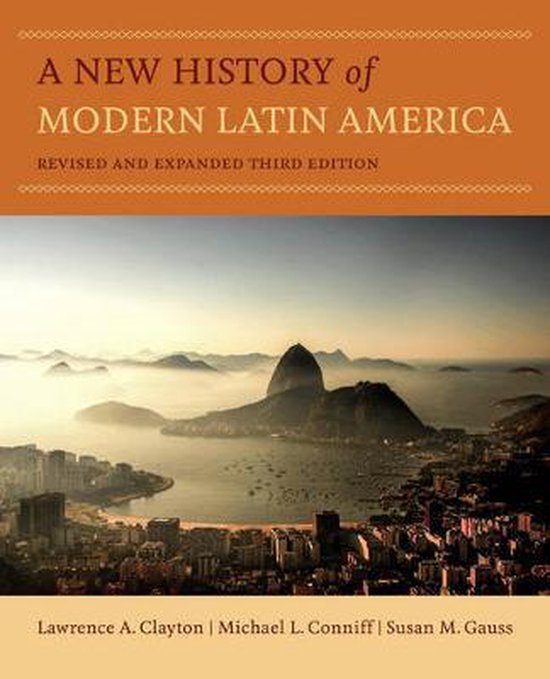
A New History of Modern Latin America
"Already a staple for survey courses in modern Latin American history, Clayton, Conniff, and Gauss's third edition validates the claim to provide a 'New History' of the field. Not only does the new edition delve more deeply into the perspectives of working-class men and women, especially indigenous and Afro-descended actors, but it is thoughtfully designed to bring these new voices and perspectives into the undergraduate classroom. The volume is also distinguished by its attention to new approaches to Latin America's international and transnational relations, and it provides a strong introduction to the region's complex history in the first decades of the twenty-first century."—Gilbert M. Joseph, Farnam Professor of History and International Studies, Yale University, and Past President of the Latin American Studies Association
"This new third edition stands out for its highly readable narrative and vivid, straightforward explanations of key themes in the history of modern Latin America. For undergraduate students especially, it offers an excellent introduction to themes ranging from early postcolonial political instability and divisions between liberals and conservatives to twentieth-century phenomena such as populism and economic globalization. It includes both comprehensive coverage of major countries and subregions—such as the Andean nations— and a skillful weaving of recent scholarship on women and gender into its interpretation of Latin America’s overall societal evolution. I strongly recommend it."—Pam Murray, Professor, University of Alabama at Birmingham
A New History of Modern Latin America provides an engaging and readable narrative history of the nations of Latin America from the Wars of Independence in the nineteenth century to the democratic turn in the twenty-first. This new edition of a well-known text has been revised and updated to include the most recent interpretations of major themes in the economic, social, and cultural history of the region to show the unity of the Latin America experience while exploring the diversity of the region's geography, peoples, and cultures. It also presents substantial new material on women, gender, and race in the region. Each chapter begins with primary documents, offering glimpses into moments in history and setting the scene for the chapter, and concludes with timelines and key words to reinforce content. Discussion questions are included to help students with research assignments and papers. Both professors and students will find its narrative, chronological approach a useful guide to the history of this important area of the world.
"This new third edition stands out for its highly readable narrative and vivid, straightforward explanations of key themes in the history of modern Latin America. For undergraduate students especially, it offers an excellent introduction to themes ranging from early postcolonial political instability and divisions between liberals and conservatives to twentieth-century phenomena such as populism and economic globalization. It includes both comprehensive coverage of major countries and subregions—such as the Andean nations— and a skillful weaving of recent scholarship on women and gender into its interpretation of Latin America’s overall societal evolution. I strongly recommend it."—Pam Murray, Professor, University of Alabama at Birmingham
A New History of Modern Latin America provides an engaging and readable narrative history of the nations of Latin America from the Wars of Independence in the nineteenth century to the democratic turn in the twenty-first. This new edition of a well-known text has been revised and updated to include the most recent interpretations of major themes in the economic, social, and cultural history of the region to show the unity of the Latin America experience while exploring the diversity of the region's geography, peoples, and cultures. It also presents substantial new material on women, gender, and race in the region. Each chapter begins with primary documents, offering glimpses into moments in history and setting the scene for the chapter, and concludes with timelines and key words to reinforce content. Discussion questions are included to help students with research assignments and papers. Both professors and students will find its narrative, chronological approach a useful guide to the history of this important area of the world.
| Auteur | | Lawrence A. Clayton |
| Taal | | Engels |
| Type | | Paperback |
| Categorie | | Geschiedenis |





